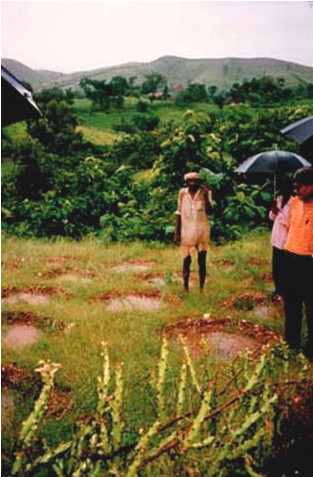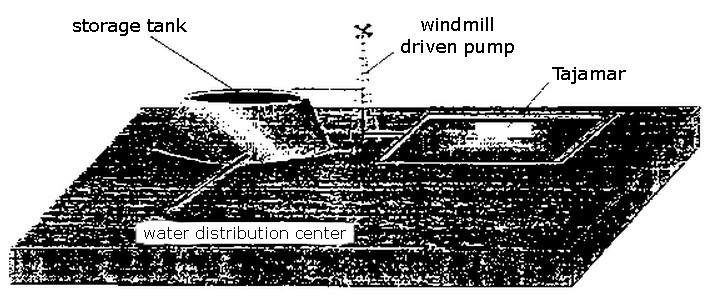Water Portal / Rainwater Harvesting / In situ rainwater harvesting
In arid and semi-arid regions, where precipitation is low or infrequent during the dry season, it is necessary to store the maximum amount of rainwater during the wet season for use at a later time, especially for agricultural and domestic water supply. One of the methods frequently used in rainwater harvesting is the storage of rainwater in situ. Topographically low areas are ideal sites for in situ harvesting of rainfall. This technique has been used in the arid and semi-arid regions of northeastern Brazil, Argentina, and Paraguay, primarily for irrigation purposes. The in situ technology consists of making storage available in areas where the water is going to be utilized.
Design, suitable conditions and design limitations
All rainfall harvesting systems have three components: a collection area, a conveyance system, and a storage area. In this application, collection and storage is provided within the landscape. Topographic depressions represent ideal collection and storage areas. In many situations, such areas are impermeable, being underlain by clay soils that minimize infiltration. Methods of rainwater harvesting in situ, including site preparation of agricultural areas in Brazil, are described below.
Use of Topographic Depressions as Rainfall Harvesting Areas
In Paraguay, areas of low topography used for rainwater storage are known as tajamares. Tajamares are constructed in areas with clay soils at least 3 m deep. The tajamares are served by distribution canals that convey water from the storage area to the areas of use. The collection and storage areas need to be fenced to avoid contamination by animals. This technology is usually combined with storage tanks built of clay. The water is delivered from the in situ rainfall collection area to the storage tank by means of a pump, usually driven by a windmill, as shown in Figure 1.
Use of Furrows as Rainwater Storage Areas

Furrows may be used as an in situ means of storing harvested rainwater. They are built prior to or after planting to store water for future use by the plants. A variation on the use of topographic depressions to store rainfall, this method uses flattened trenches between the rows of crops to store water. Furrows may have mud dams or barriers every 2 m to 3 m along the row in order to retain water for longer periods of time and avoid excessive surface runoff and erosion. Raised beds may also be used to trap the water in the furrows, or uncultivated areas may be left between rows, spaced at 1 m apart, to assist in capturing rainwater falling on the land surface between furrows.
The Guimarães Duque
The Guimarães Duque method was developed in Brazil during the 1950s, and uses furrows and raised planting beds, on which cross cuts to retain water are made using a reversible disk plow with at least three disks. The furrows are usually placed at the edge of the cultivation zone.

